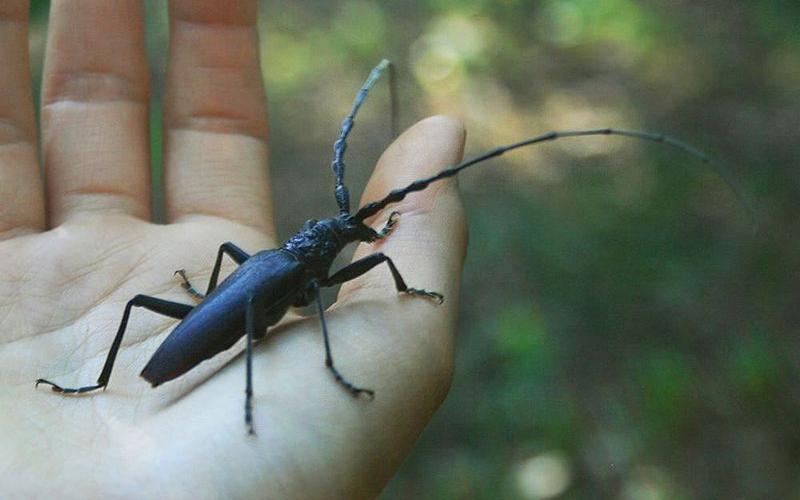Nemanja Gojković
Aims are to collect data on C. cerdo population size and habitat conditions on Fruška Gora Mt and develop non-lethal traps and optimise non-invasive DNA isolation method.

© Franz Xaver, 2012, Wikimedia Commons.
Cerambyx cerdo (the Great Capricorn Beetle) is a globally vulnerable saproxylic species, strictly protected by Serbian law, yet national data on its population structure and genetic variability is lacking. Although Great Capricorn Beetle’s range of hosts can consist of several deciduous genera, it is primarily tied to old and decaying oak (Quercus sp.) trees. When it comes to Fruška Gora Mt, C. cerdo has suffered a tremendous habitat loss due to the major conversion of high forests into coppice forms, expansion of linden (Tilia sp.), as well as recent decline of Q. petraea trees. Thus, in order to determine its response to the novel enviromental pressure, Fruška Gora's Great Capricorn Beetle population will be evaluated by determining its population size, current range of hosts and habitat conditions.
An additional problem which will be addressed is the issue of collecting threatened saproxylic beetles, such as C. cerdo. Namely, the use of various traps has by far outperformed manual approach, but the obvious problem is that insects are killed the moment they are caught, rendering existing traps useless when it comes to collecting endangered specimens since it would harshly lower their population size, only further jeopardizing their survival. Therefore, an original approach in insect capturing will be implemented by combining attractants and a novel trap design.
Finally, the use of non-invasive DNA sampling is well recorded for large animals, but is difficult to be achieved for insects due to a very small size of biological sample. However, such feat was accomplished in the past for Coleoptera specimens by using their dried feces. The previously utilized protocol will firstly be optimised for C. scopolii, a species closely-related to C. cerdo, with very similar habitat requirements, biology and morphology, which is additionally of least concern, and can therefore be used as a model for Great Capricorn Beetle. Subsequently, Fruška Gora’s C. cerdo population will be genetically assessed, providing concrete data about its genetic variability and evolutionary potential, which will be used for developing a proper management plan.